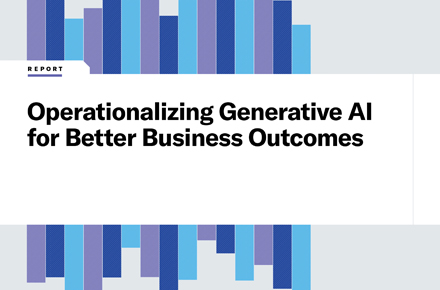How Hyperautomation Can Help Solve the Talent War
June 7, 2022 / Unisys Corporation
The workforce does not look like it did before the COVID-19 pandemic. How people work has significantly shifted in the past two years as more people are working from home or under hybrid models. While the question of “how people are working” has dominated the headlines lately, we’re missing another significant, more pressing problem — can we find people to work at all?
Due to the Great Resignation and the Baby Boomer generation — those born between 1946 – 1964 —retiring and leaving the workforce, organizations are struggling to fill open positions, creating a talent war and leaving a knowledge gap for a smaller workforce to address efficiently. As the Baby Boomer generation ages and retires, the number of people of working age (20 – 64 years old) will shrink in the EU, creating a strain as the working population provides services to an even larger proportion of non-working people.
Simply put, organizations can’t find enough people with the right skills in the right place to do the work.
Despite a shortage of available talent, what needs to be done on any day remains unchanged or increased. What can change is how you attempt to solve the problem of getting the work done.
Instead of focusing only on finding, attracting and retaining people in a scarce job market, consider ways to eliminate the need for human labor. For example, if you automate processes, you won’t need as many people to do your organization’s work. Hyperautomation offers a way of working that can help businesses achieve more with fewer people.
Most organizations operate using systems that require high human intervention. But should that continue? Challenging how organizations have traditionally staffed certain tasks and systems can be a good entry point to exploring how hyperautomation can help fill in the gaps amid this labor shortage.
But how?
What is hyperautomation?
Many organizations already have automated processes for mostly repetitive tasks that do not require a lot of scripting or robotic processes, making things more efficient while reducing cost. Hyperautomation takes this concept and advances it.
Gartner says hyperautomation “enables organizations to rapidly identify, vet and automate as many processes as possible using technology such as robotic process automation (RPA), low-code application platforms (LCAP), artificial intelligence (AI) and virtual assistants.” It removes the gaps between processes, connecting and automating the entire workflow. This concept can be applied to different business processes throughout an organization and across industries, such as law enforcement, public process handling, border control, import/export processing and other highly regulated sectors. The versatile and product-agonistic process can be applied to many tasks.
To better understand the power of hyperautomation, here are a few examples of how it can help streamline business processes, allowing organizations to achieve more with fewer people.
Remove the gaps between records management processes
All organizations have processes built on records that define how information is stored within different software systems. Records management with hyperautomation applies technology that moves a record through a process with minimal intervention. Hyperautomation refers to the connection of multiple processes, automating the entire chain from end to end. It also eliminates media breaks, i.e., anytime there’s a handoff.
Hyperautomation can help organizations extract key data from emails and other channels, categorize that data and automatically launch appropriate tasks based on the correspondence via automated workflow routing — no human needed.
Record auditable data trails
Hyperautomation can also help organizations validate and meet compliance requirements, including those related to data storage and validation. A benefit of using a hyperautomated records management system is governance — an automated workflow means no recordkeeping steps are skipped. Plus, it stores all records in the same location, maintaining an audit trail — a requirement for highly regulated industries. For example:
- Companies that perform audit-validated site or equipment inspection processes can streamline these with hyperautomation.
- Law enforcement agencies that must keep auditable trails for their evidence can use a hyperautomated case management process that pulls domain-specific entities from records and stores them centrally for rapid auditing on demand.
- Companies with various media channels can use a hyperautomated digital asset management system to provide an audit-proofed environment for video, audio and picture assets while adhering to data protection and compliance standards.
How organizations can start hyperautomating their processes
The talent war born from a shrinking workforce presents a chance and a challenge. The chance lies in the application of process automation to remove the need for people in the execution of business processes. The challenge is in the creation of a vibrant work culture that will attract the talent necessary to fuel and orchestrate your business process automation transformation.
While organizations struggle to build out their workforce, and as the available pool of candidates continues to shrink, this challenge will only grow. But organizations can find relief if they hyperautomate their businesses processes.
All an organization needs to do to get started is detail the steps in their processes.
Lots of different companies already have record management systems in place, so they’re one step closer to increasing efficiency with hyperautomation. While different record management systems use various solutions, such as OpenText and Acta Nova, hyperautomation can be applied to any record management system. What matters is the processes can be automated.
There are experts available to help guide organizations along this hyperautomation journey. There are even experts with experience in highly regulated industries (government organizations, law enforcement and public utilities, etc.) who know the landscape and can provide specialized help. It is invaluable to partner with industry-specific experience to ensure compliancy and to create platform-agnostic solutions. Business process expertise can help guide and automate processes that run on an organization’s records management system. Companies like Unisys specialize in the development of accelerators that complement and strengthen these platforms by adding technology addressing specific use cases.
To explore how Unisys can help your organization start its hyperautomation journey, contact our Business Process Solutions team.




















